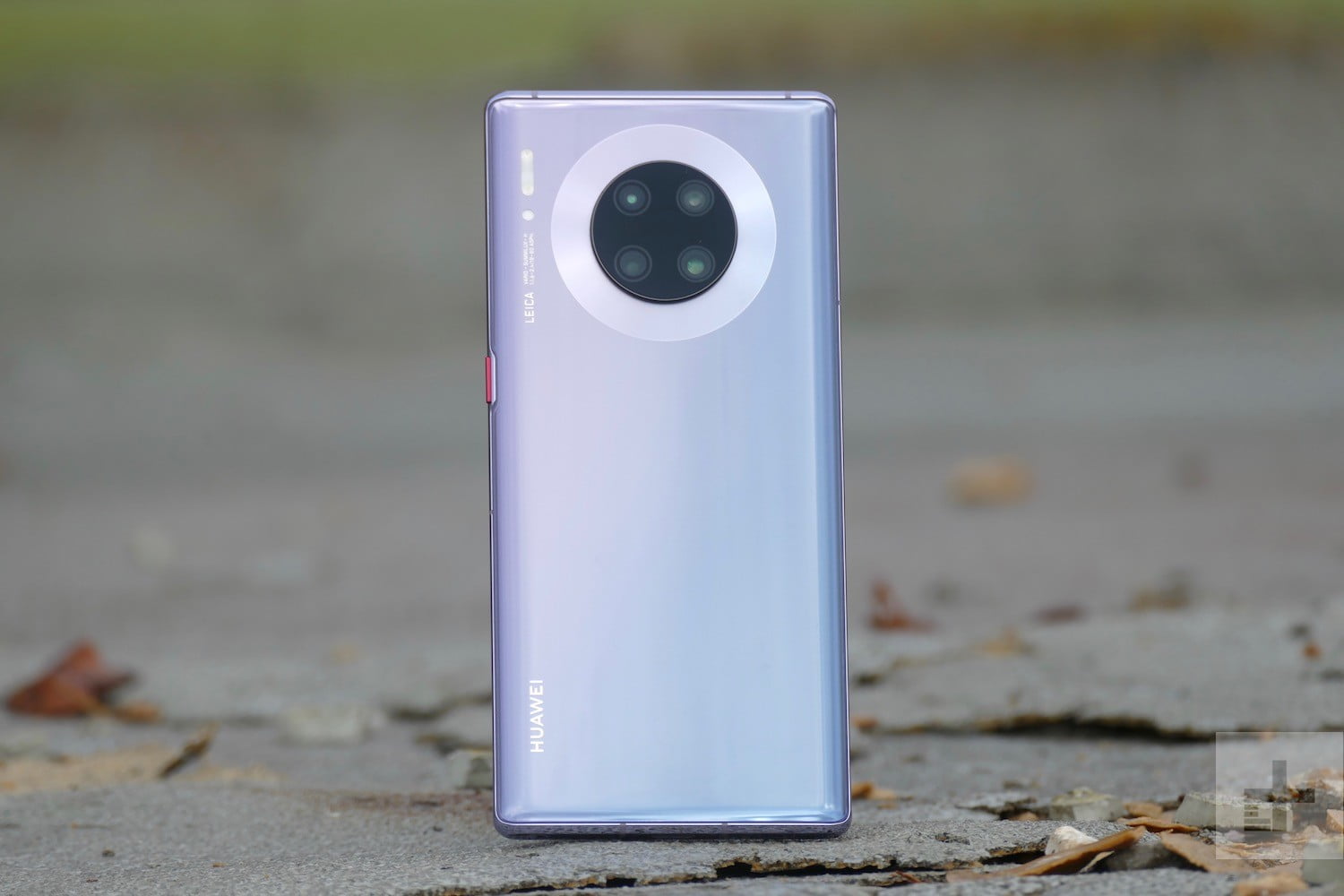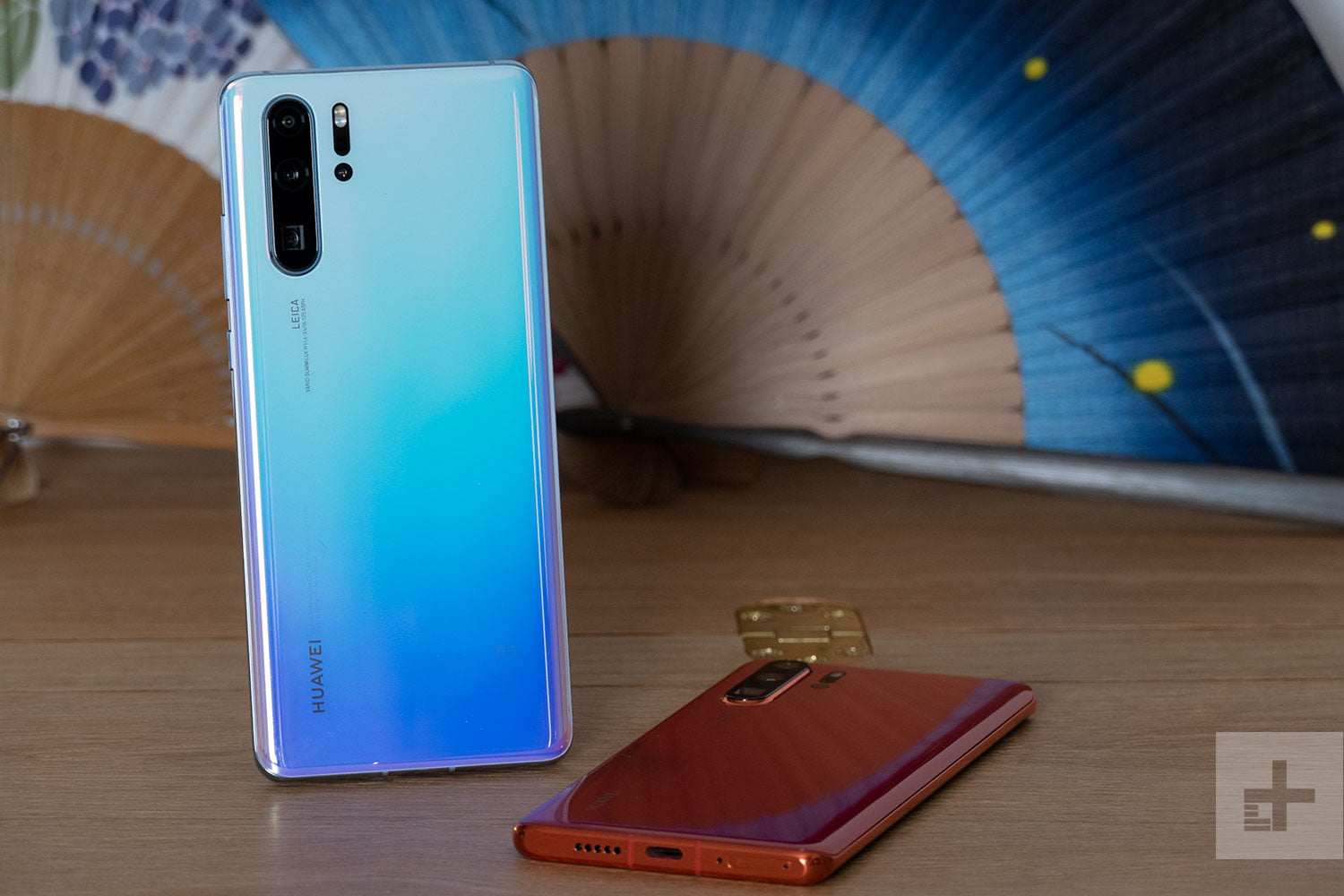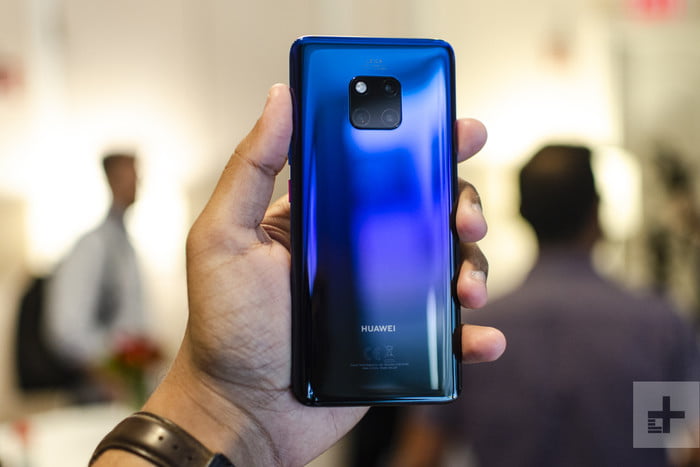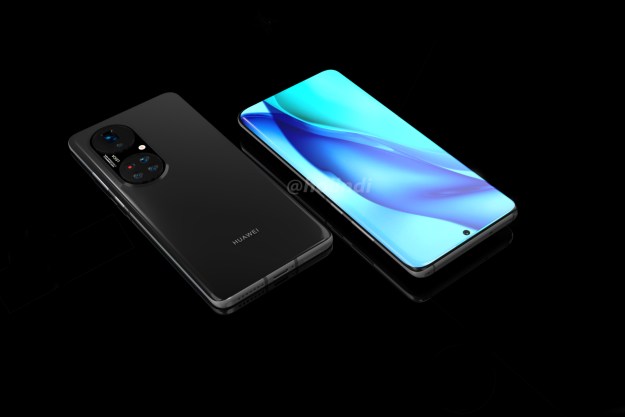With one of the most impressive spec sheets we’ve ever seen, the Huawei Mate 30 Pro has almost everything you could want in a smartphone, but it lacks some very important elements because of the U.S. government ban. Sadly, the Mate 30 Pro comes out of the box without any Google apps on board and it lacks any official U.S. carrier support or a release date in the states. Determined buyers may decide to import and sideload the missing apps and services, and in the markets where it is available the Huawei Mate 30 Pro is going to be a tempting prospect, so here’s how it compares to Huawei’s previous two flagships.
Specs
| Huawei Mate 30 Pro | Huawei P30 Pro | Huawei Mate 20 Pro | |
| Size | 158.1 × 73.1 × 8.8 mm (6.22 × 2.88 × 0.35 inches) | 158 × 73.4 × 8.41 mm (6.22 × 2.89 × 0.33 inches) | 157.8 × 72.3 × 8.6 mm (6.22 × 2.85 × 0.34 inches) |
| Weight | 198 grams (6.98 ounces) | 192 grams (6.77 ounces) | 189 grams (6.66 ounces) |
| Screen size | 6.53-inch AMOLED display | 6.47-inch AMOLED display | 6.4-inch AMOLED display |
| Screen resolution | 2,400 × 1,176 pixels (409 pixels-per-inch) | 2,340 × 1,080 pixels (398 pixels-per-inch) | 3,120 × 1,440 (538 pixels-per-inch) |
| Operating system | Android 10 | Android 9.0 Pie | Android 9.0 Pie |
| Storage space | 128GB, 256GB | 128GB, 256GB, 512GB | 128GB, 256GB |
| MicroSD card slot | No – features proprietary Nano Memory Card | No – features proprietary Nano Memory Card | No – features proprietary Nano Memory Card |
| Tap-to-pay services | Google Pay | Google Pay | Google Pay |
| Processor | Kirin 990 | Kirin 980 | Kirin 980 |
| RAM | 8GB | 6GB, 8GB | 6GB, 8GB |
| Camera | Quad-lens 40MP main, 40MP ultra-wide, 8MP telephoto, and ToF rear, 32MP and ToF front | Quad-lens 40MP, 20MP, 8MP, and ToF rear, 32MP front | Triple-lens 40MP, 20MP, and 8MP rear, 24MP front |
| Video | 2,160p at 60 frames per second, 1,080p at 960 fps, 720p at 7680 fps | 2,160p at 30 frames per second, 1,080p at 60 fps, 720p at 960 fps | 2,160p at 30 frames per second, 1,080p at 60 fps, 720p at 960 fps |
| Bluetooth version | Bluetooth 5.0 | Bluetooth 5.0 | Bluetooth 5.0 |
| Ports | USB-C | USB-C | USB-C |
| Fingerprint sensor | Yes (in-display) | Yes (in-display) | Yes (in-display) |
| Water resistance | IP68 | IP68 | IP68 |
| Battery | 4,500mAh
Fast charging (40W) Qi wireless charging (27W) |
4,200mAh
Fast charging (40W) Qi wireless charging (15W) |
4,200mAh
Fast charging (40W) Qi wireless charging (15W) |
| App marketplace | Google Play Store | Google Play Store | Google Play Store |
| Network support | TBC | T-Mobile, AT&T | T-Mobile, AT&T |
| Colors | Black, Space Silver, Cosmic Purple, Emerald Green | Amber Sunrise, Breathing Crystal, Pearl White, Aurora, Black | Emerald green, midnight blue, twilight, pink gold, black |
| Price | 1,100 euros (around $1,215) | 999 euros (around $1,090) | 1,049 Euros (around $1,145) |
| Buy from | Huawei | Huawei | Huawei |
| Review score | Hands-on | 4.5 out of 5 stars | 4.5 out of 5 stars |
Performance, battery life, and charging
The newer Kirin 990 processor in the Huawei Mate 30 Pro is naturally faster and more efficient than last year’s Kirin 980, which is what you’ll find in the P30 Pro and the Mate 20 Pro. Huawei has also made improvements to the neural processing unit, largely to boost its photography capabilities. There’s 8GB of
Huawei’s newest phone also has an advantage in the battery department with an extra 300mAh of capacity and support for faster wireless charging. We found that the P30 Pro had plenty of stamina, so the Mate 30 Pro should be capable of going two days between charges. At up to 27W the Mate 30 Pro’s wireless charging rate is faster than the maximum wired charging rate for most phones.
Winner: Huawei Mate 30 Pro
Design and durability
- 1. Huawei Mate 30 Pro
- 2. Huawei P30 Pro
- 3. Huawei Mate 20 Pro
There are some big changes in the design department that really make the Mate 30 Pro stand out from the crowd. The big, 6.53-inch screen has 88-degree curves on each side for a waterfall effect. There’s still a notch at the top for that dual-lens front-facing camera. While there is a power button on the side, you won’t find any volume controls — volume is now turned up and down by tapping then sliding on the screen’s curved edges. Around back Huawei has placed its dual-lens camera suite in a circle and accentuated it with a frame that catches the light. The glass back has a gradient texture that goes from matte at the bottom to gloss at the top, and you can even get versions with fake leather backs if you prefer. The P30 Pro is still a great looking phone with a smaller teardrop notch on the front and a vertically stacked camera suite at the top left on the glass back. The Mate 20 Pro had a bigger notch and a central, square camera suite.
All of them require a case, but water isn’t an issue since they each boast an IP68 rating that means they can survive submersion in shallow water for a short time.
Winner: Huawei Mate 30 Pro
Display
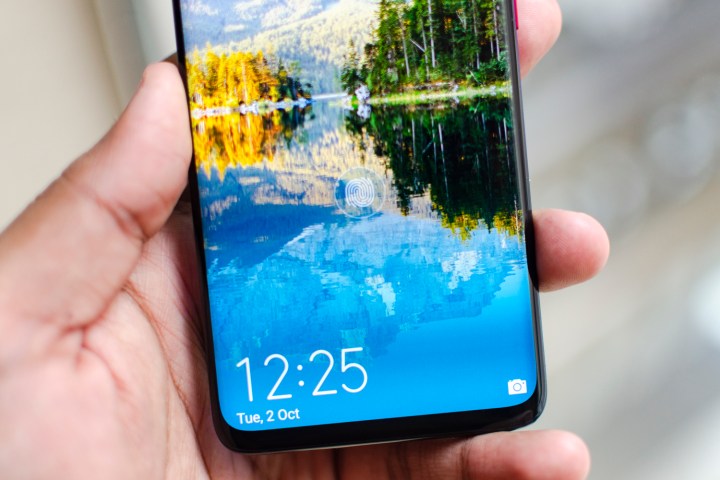
All three of these phones have excellent OLED displays with deep blacks, vibrant colors, and plenty of brightness. The Mate 30 Pro has a slightly bigger screen at 6.53 inches to the P30 Pro at 6.47 inches and the Mate 20 Pro at 6.4 inches, but there isn’t a great deal in it. Surprisingly, the older Mate 20 Pro has the sharpest screen of the bunch with a resolution that translates to 538 pixels per inch. The P30 Pro has a smaller teardrop notch than the other two. Realistically, these are three great screens and you’ll be hard-pressed to see much difference between them. They all have in-display fingerprint sensors.
Winner: Huawei Mate 20 Pro
Camera
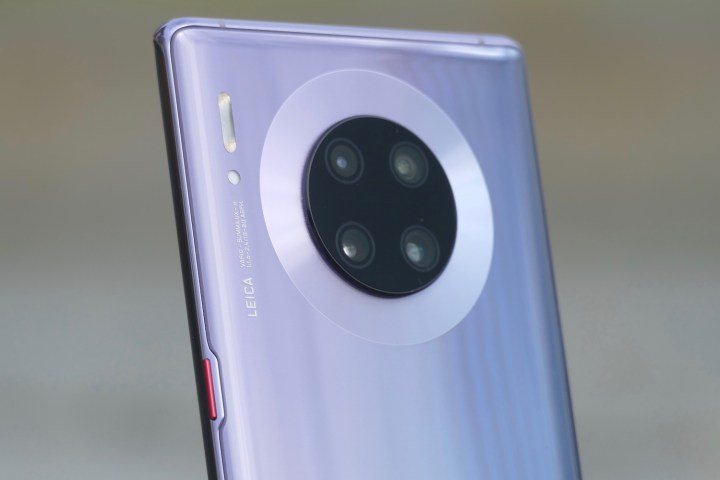
Huawei has been pushing the boundaries of modern
Winner: Huawei Mate 30 Pro
Software and updates
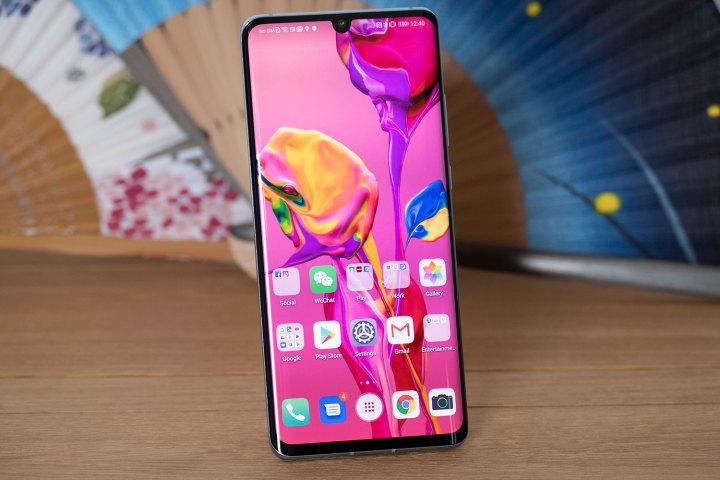
This is where things fall apart for the Mate 30 Pro. Though it does have Android 10, it’s the open-source version with Huawei’s EMUI on top. There’s no doubt that EMUI 10 is feature-packed, but a lot of people are going to miss the Play Store and Google’s long list of useful apps. It probably doesn’t matter to most people that it’s possible to install Google’s services on the Mate 30 Pro, because you expect everything to work the way you want out of the box when you’re paying this much for a phone. Huawei has released a version of the P30 Pro with
Winner:
Special features

All three phones support reverse wireless charging should you ever want to lend some battery life to another device that supports Qi. The front-facing camera in the Mate 30 Pro allows for air gestures, so you can wave your hand to scroll or close your fist to take a screenshot, for example, though we’re not convinced it’s a feature people will use often. The slow-motion video is a lot of fun, but it’s not a major leap over the previous phones. The Mate 30 Pro scrapes a win here, but only just.
Winner: Huawei Mate 30 Pro
Price and availability
The Huawei Mate 30 Pro costs 1,100 euros, which is around $1,215. The P30 Pro was around $1,090 at release and the Mate 20 Pro was around $1,145, but you’ll be able to find them a lot cheaper than that now, especially if you’re willing to buy used.
None of these phones are officially available in the U.S. which means importing and taking a bit of a risk if you live in the states. They also don’t have any official carrier support, though the P30 Pro and Mate 20 Pro both worked fine on T-Mobile and AT&T which is likely to be the case with the Mate 30 Pro.
Overall winner: Huawei Mate 30 Pro
The Huawei Mate 30 Pro offers the best performance, greatest stamina, and the most versatile camera suite of the three, but the lack of Google apps is going to be enough to turn a lot of people off. If you’re in the states and you aren’t prepared to dig into guides and fiddle with your phone, then the P30 Pro or the Mate 20 Pro are both likely a better buy, or you can dig into our best smartphones roundup to find another option.
Editors' Recommendations
- Huawei’s Mate 50 Pro is here with an insane 200x zoom
- Huawei P50 Pocket rivals Z Flip 3 in design, but not price
- Huawei’s P50 Pro launches with 200x camera zoom, but leaves out 5G
- Samsung Galaxy S20 Plus vs. iPhone 11 Pro Max: Get Plus or go Max?
- The best Huawei P40 Pro cases and covers
